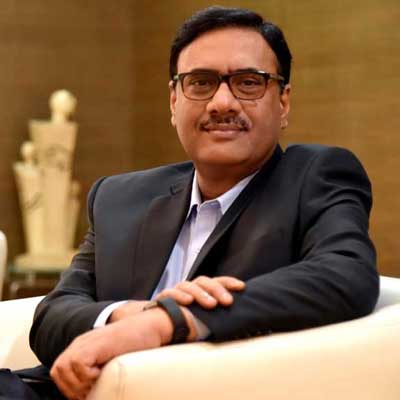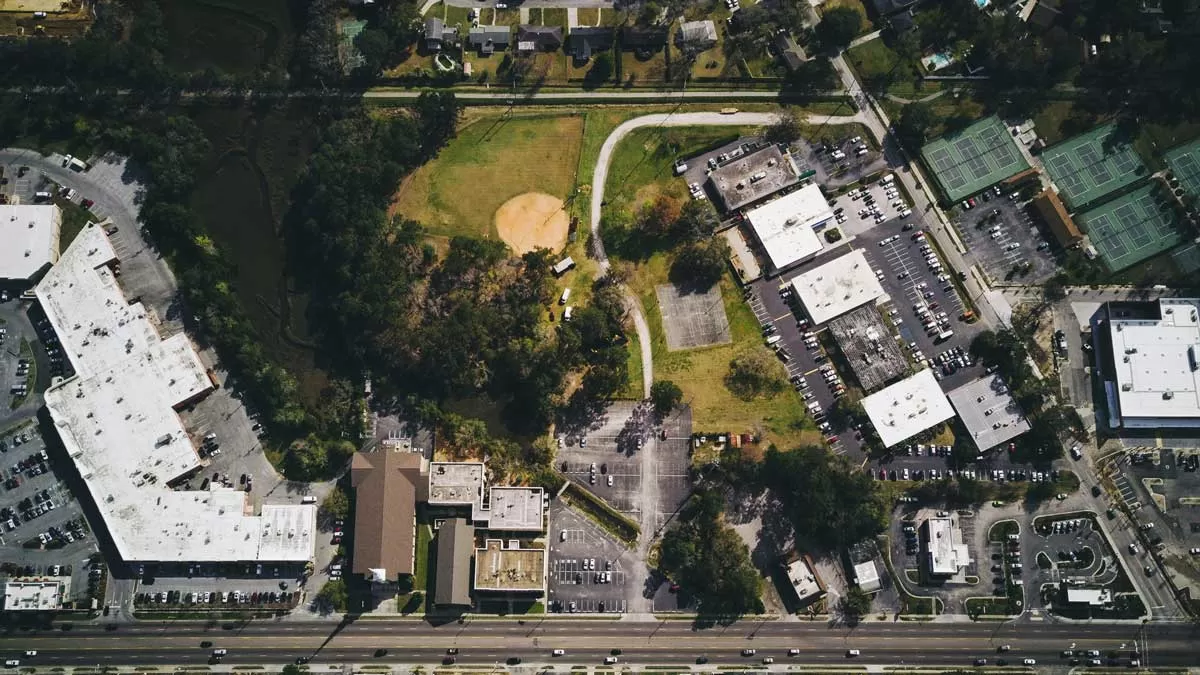Neeraj Akhoury, CEO India LafargeHolcim, MD & CEO of Ambuja Cements Limited believes that digital technology and digitisation can be the strong pillars of innovation and sustainability. He shares his views on the digital transformation journey.How is the adoption rate of technology in the cement industry? Why do you think it is important for cement players to embrace technology?The world has been witnessing a technological and digital transformation and the cement industry is not an exception. Like any other industry, cement companies too need to fast-track digital adoption to deliver long-term and sustainable value propositions. Often known to be contributors to environment pollution, the adoption of technology by cement companies can help ensure efficiencies in manufacturing and supply chain. Furthermore, digital technology and digitisation can be the strong pillars of innovation and sustainability.Technology is also a great enabler for the industry to move in the right direction as far as race towards net zero carbon emission is considered. The increased focus of the industry on achieving carbon neutrality and energy efficiency can be achieved through embracing a two-pronged approach: digitalisation and innovation.In an ever-evolving business environment, organisations which embrace technology and remain focused on digital innovation, intelligent use of data and excellence in customer services can lead the way.At Ambuja Cement and ACC, we have been harnessing digital technologies across the curve, from targeting increase in operational efficiencies to strategic data-driven decision-making that is helping us continue in our endeavour to be an innovative and responsible organisation by building sustainable, innovative and differentiated solutions.What are the various digital/IT technologies deployed at your company? What was the objective behind the implementation?Over the last few years, Ambuja Cement and ACC have increasingly focused on transforming their business by leveraging IT and digital interventions. We are continually investing in digital assets to step up the level of automation in our operations. Artificial Intelligence, big data, cloud, and systems integration are some of the new technology horizons that we are currently focusing on.The digital transformation journey is a major part of strategic planning. Digitalisation has been initiated in the following areas—operational excellence, controls and compliance, and culture. The key focus was to implement digital tools in various parts of operations. We strongly feel that digitalisation will not just help in providing competitive advantage but would also help in creating a sustainable growth journey in the coming years.Our ‘Plants of Tomorrow’ initiative is a testament to our focus on digitisation in manufacturing, where technical information systems record minute-by-minute data from all key assets at the plants. This has enabled us to improve operations, generate automatic alerts, and has also laid the foundation for implementing Industrial Internet of Things (‘IIoT’) use cases. Another Plants of Tomorrow initiative is PACT - the Performance and Collaboration Tool – which effectively focuses operational decisions based on data about weekly operations, monthly performances, projects and actions. The business benefits of PACT are immense – much time is saved as decisions are made quickly and with data transparency, targets are consistently achieved. PACT is another step paving the way to a digital future.How have Ambuja Cement and ACC benefited from IT initiatives?Both Ambuja Cement and ACC have accelerated our focus on digitisation to enhance customer experience. We have developed apps such as the Dealer Connect App and Concrete Club App for connecting dealers, and construction professionals such as architects and engineers.Both companies have already implemented tools such as Distributed Control System (DCS), Tool Location System (TLS) and Supervisory Control and Data Acquisition (SCADA) to increase plant efficiency and uptime.Launched almost a year ago, another innovation - the Remote Troubleshooting Tool using Smart Glass Technology has proven to be a delight for site engineers. This two-way tool ensures timely and expert support to plants, especially during this pandemic where this tool has been considered a boon.Digital Eye is another technology utilised by both companies to digitally monitor factory and plant operations using drones and video analytics to operate effectively and increase safety.What is the objective behind the ‘Plants of Tomorrow’ initiative?Our ‘Plants of Tomorrow’ initiative has been a great example of our focus on digitisation in manufacturing and we will continue our momentum of technology and digital adoption. We are focused on digitalisation through the ‘Plants of tomorrow’ initiative. We implemented Technical Information Systems (TIS) that records minute-by-minute data from all key assets at the plants. Performance And Collaboration Tool (PACT), a cross platform dashboard/decision support system to view critical parameters from TIS data, collaborate and take actions on alerts, has also been implemented at all plants.EDGE AI has been implemented in some of our plants as an advanced analytics platform to facilitate integration of all Machine Learning (ML) and Artificial Intelligence (AI) initiatives.This has helped improve operations, generating automatic alerts and has laid the foundation for implementing Industrial Internet of Things (IIoT) use cases. We also piloted the use of AI/ML into predicting cement strength, fineness and predictive maintenance of critical equipment like Vertical Roller Mill (VRM)How is the “Plants of Tomorrow” initiative enabling efficiency at the supply chain level and manufacturing level?“Plants of Tomorrow” certified operation promises 15 to 20 percent more operational efficiency compared to a conventional cement plant. Both companies have also piloted the use of ‘Artificial Intelligence/Machine Learning’ (‘AI/ML’) into predicting cement strength and quality. Within logistics, we have launched an integrated planning tool that enables demand consolidation, constraint-based supply plan and network optimisation. We want to ensure a seamless end-to-end process and with this aim, we have also adopted supply chain automation. Through this, we aim to create a supply chain mechanism, which is agile, cost competitive and sustainable, leading to customer delight. In order to enhance asset optimisation and ensure higher plant availability we implemented tools such as Distributed Control System (DCS), Tool Location System (TLS) and Supervisory Control and Data Acquisition (SCADA) which are expected to enhance plant efficiency and increase uptime.We have also introduced Internet of Things (IoT) across the manufacturing value chain along with usage of artificial intelligence and machine learning under the project EDGE to facilitate rapid deployment of predictive models and seamless connectivity with plant data sources.There are multiple initiatives which have been picked up on predictive quality (cement fineness, cement quality) and predictive maintenance (VRM failure, refractory life). These initiatives hugely help in optimising energy consumption per tonne of cement enabling cost management.Apart from operations, both companies also realised the need of digital implementation in the Supply chain Management, and thus have implemented Blue Yonder Luminate Planning for supply chain transformation and digitalization. In order to leverage the power of analytics in logistics planning, we launched the Transport Analytics Center (TAC) in March 2020, which ensured allowing operational teams with real-time data on distribution safety, cost optimisation and efficiency improvement.Please elaborate on the process. Was it done in a phased manner? How much time did it take? Were there any hurdles?Technology adoption is a gradual process and over the years, we have implemented several cutting-edge solutions to deliver efficiency. However, over the last year we have witnessed an acceleration in adopting and embracing technology, like never before.In my opinion, any new concept comes with challenges, and to ensure the adoption of digital solutions is seamless, we train our employees to help them adapt to technologies. SAIL, our e-learning platform, has custom curated content and modules which has aided our employees to harness digital technology to upgrade their knowledge and skill set to meet the industry requirements.Kindly provide project cost/allocation of budget for technologies deployed.As mentioned earlier, we are investing in digital technologies and solutions for efficient manufacturing, and to deliver value to our stakeholders. Similarly, going forward, we will keep the momentum going to expand our portfolio driven by innovation, and stay ahead of the curve, with responsibility and resilience.How are new processes better than old methods? What key benefits were achieved?These new processes have helped us collaborate better with suppliers, governments, industry bodies, businesses, and find new ways to innovate and create positive change. As mentioned earlier, “Plants of Tomorrow” certified operation promises 15 to 20 percent more operational efficiency compared to a conventional cement plant.Modernising our supply chain has helped us improve operations, customer service, cost optimisation and organisational profitability. During the last year, our investment in digital capabilities has supported the introduction of real-time journey visibility and tracking. We now have integrated dashboards and in-time data which provide key insights into our business.The initiative will maximise EBITDA by effectively using technology for capacity utilisation improvement, shift from low to high EBITDA markets, and enable cost optimisation and improved customer services.The digital tools have also improved workforce mobility. Enforcing integrated planning and workforce management has enabled optimisation and key efficiencies in the business for planning and scheduling to meet the demands.Moreover, technology aided the skilling and development of our employees in a remote working model. Our e-learning platform SAIL was leveraged to create a relevant and agile workforce.As we continue on a path of digitisation, we aim to leverage technology and network optimisation tools to deliver a sustainable competitive edge.How was the upskilling done? Were there any challenges?At ACC, we offer our teams a defined talent value proposition to enrich and fulfil their aspirations so that they can realise their true potential to ‘make a difference’.As previously mentioned, we have developed an in-house digital learning platform “SAIL” for our employees to meet their learning and development needs. The content was customised keeping in mind the current scenario, to help our workforce understand how to leverage digital technology for a new world order.The majority of training programmes conducted on SAIL during 2020 included physical and virtual sessions on functional skill development, soft skill development and other modules relevant for personal and professional growth of employees.Along with scalability & reach, how to keep employees connected and engaged and keep the learning going in the organization were our important challenges.The need to reach out to employees and teams dispersed across the country, and to make learning available and accessible for all was always a challenge. The learning experience platform addressed this issue, as today we have 7000+ registered users across ACC, Ambuja, LHGH & HSSA all part of LafargeHolcim India workforce.How has IT played an important role in expanding your footprints in India/abroad? Do you think it helped you to compete with others in the market?Being part of a global cement major, Holcim group, we are consistently leveraging the Technology Know How (‘TKH’) of the Company, in terms of access to best-in-class testing processes for upgradation of local labs, new ideas on specially formulated innovative cement products and bringing global brands like ECOPact, the Green Concrete, to the Indian market.Through these technologies, we are innovating more than ever and investing in our people, cutting-edge solutions and operations to develop products that take advantage of emerging trends in the industry.Accelerated adoption of technology and imbibing it in our business practices has helped us progress well on our sustainability agenda. We are working intensively at our plants, to further reduce our CO2 emissions. We are investing to improve the energy efficiency of our production facilities. Supported by technology, we aim to use alternate raw materials and fuels and replace CO2 intensive clinker in our cement with waste derived resources such as fly ash and slag.Using advanced technology, we will continue to develop a robust line of sustainable and innovative solutions at par with international quality standards.How has COVID-19 emerged as a need for IT implementation in the cement industry? What initiatives did your company take during Covid times to achieve better efficiency even during lack of resources?As a leading player in India’s building materials business, we are aware of the forces shaping our industry and technology is one of the factors.Although the disruption brought about by COVID-19 created short-term challenges, it also created medium-term opportunities. During the year, our core focus remained on ‘Health, Cost and Cash’. Our operations continued to pave the way for business continuity, innovation, and resilience.During the Pandemic we launched innovative products to keep our commitment on building a sustainable living for the future. With the ability to predict market requirements and identify consumer preferences we launched products backed by extensive research.Our aim is to provide customers with solutions that not only enhance durability but are environment friendly. The expansion of our portfolio with the launch of ECOPact, ACC Thermofillcrete, ACC Suraksha NX Antiwashout Concrete, and ACC ADMIX will unveil possibilities for new-age construction. By developing these cutting-edge building solutions, we aim to drive efficiency and deliver better value for commercial as well as individual customers.What are your future plans in terms of IT implementation and overall company goals?We will continue to invest in digital assets to upgrade our levels of automation in our operations.As an industry leader we are looking at 'Plants of Tomorrow’ as a big opportunity and responsibility to place India on the map of global cement manufacturing. This path-breaking project will lead to transformative outcomes not just in terms of operational and financial gains but also make cement manufacturing in the country environmentally sustainable and create a safe work environment for our colleagues across all our plants.


















